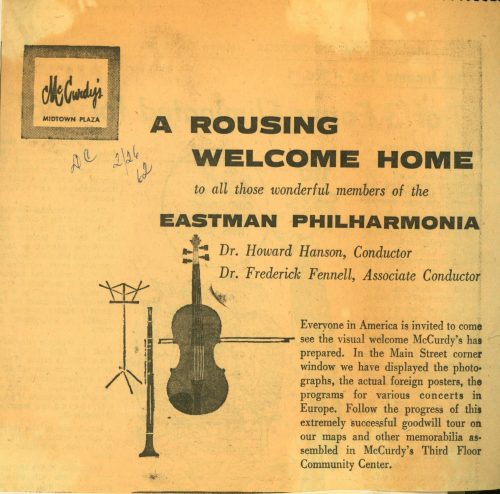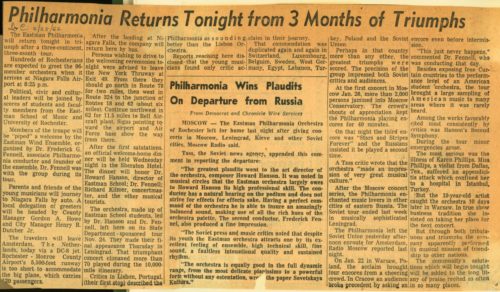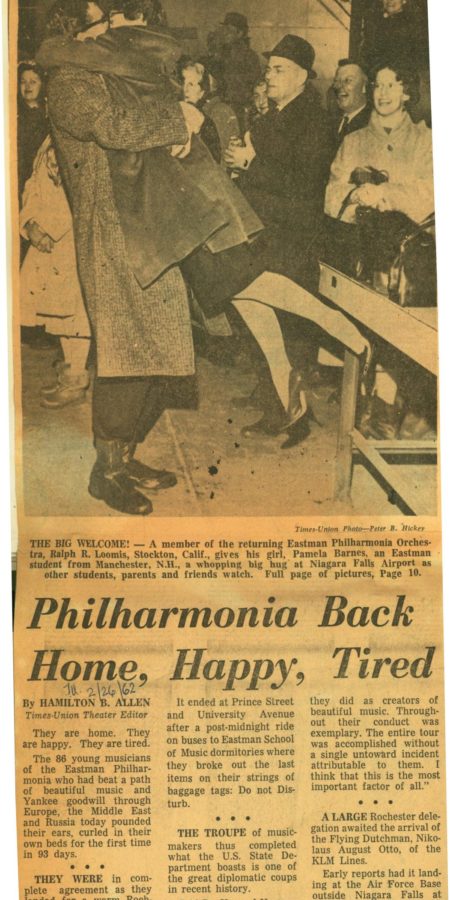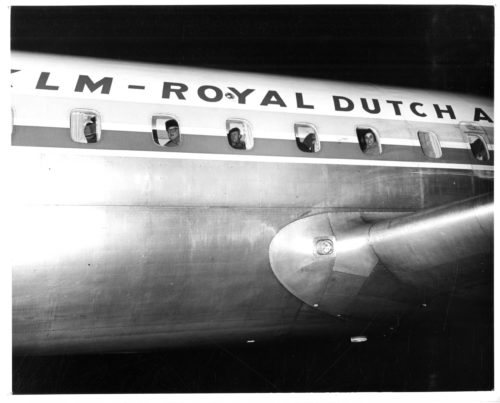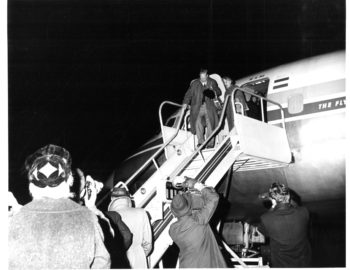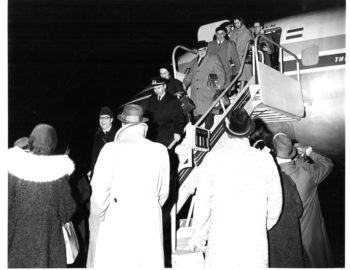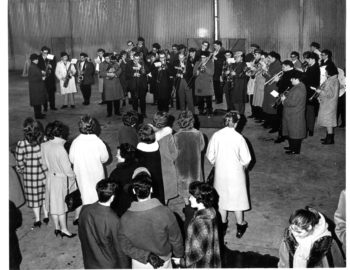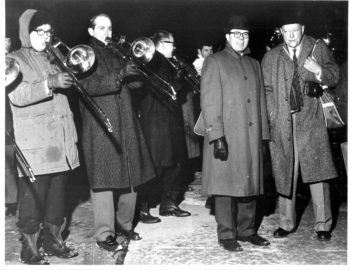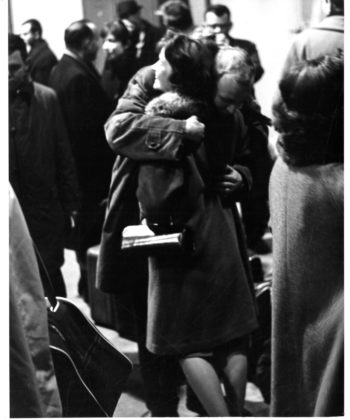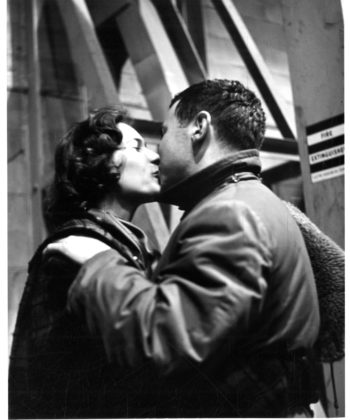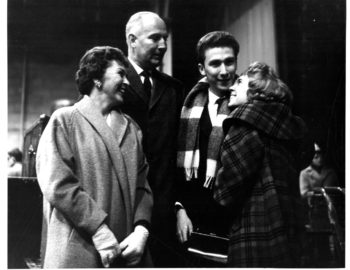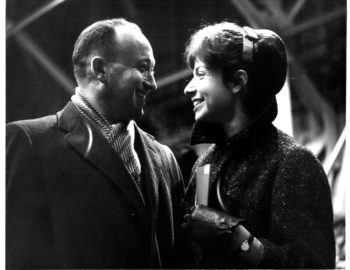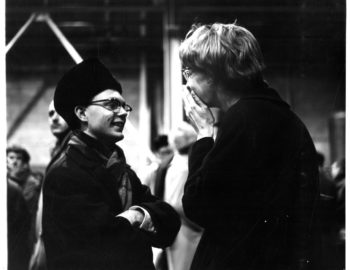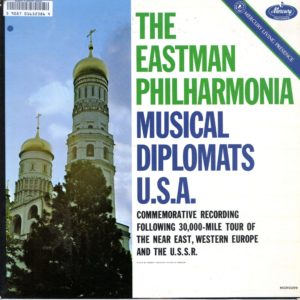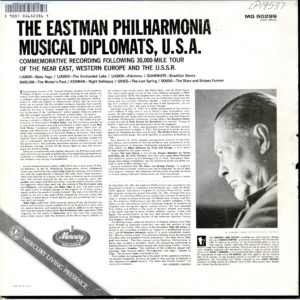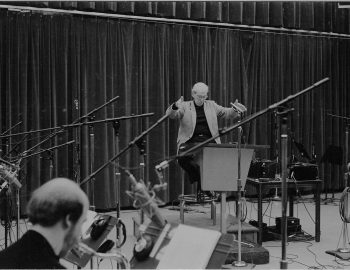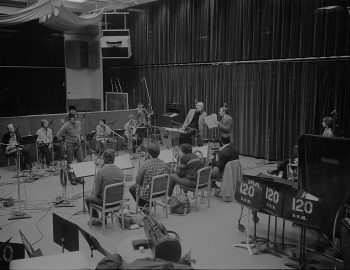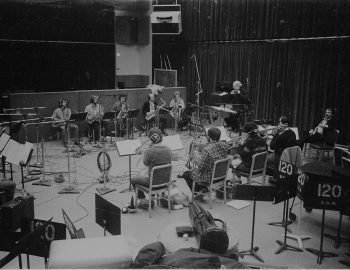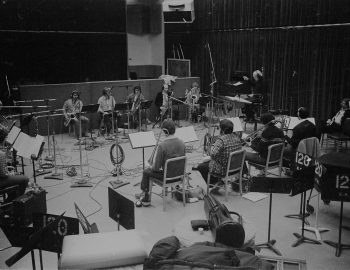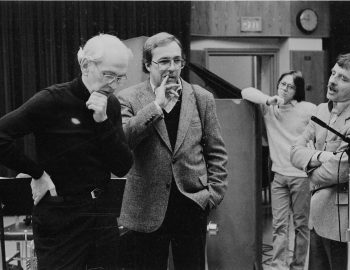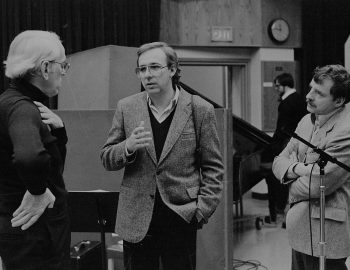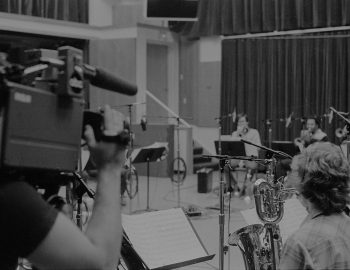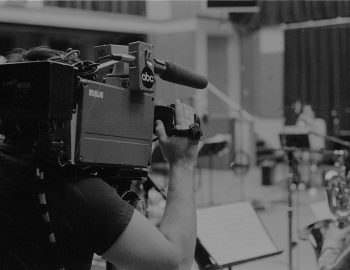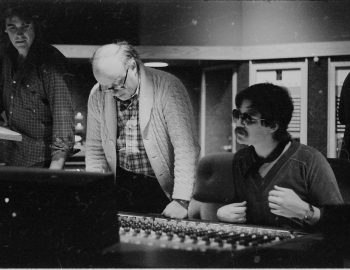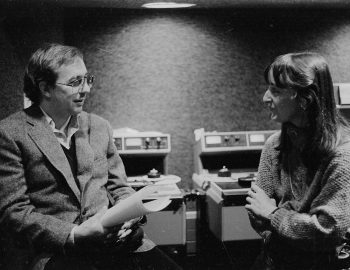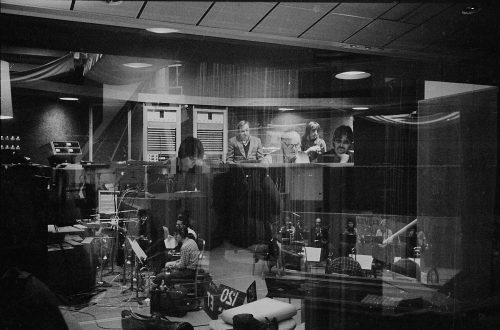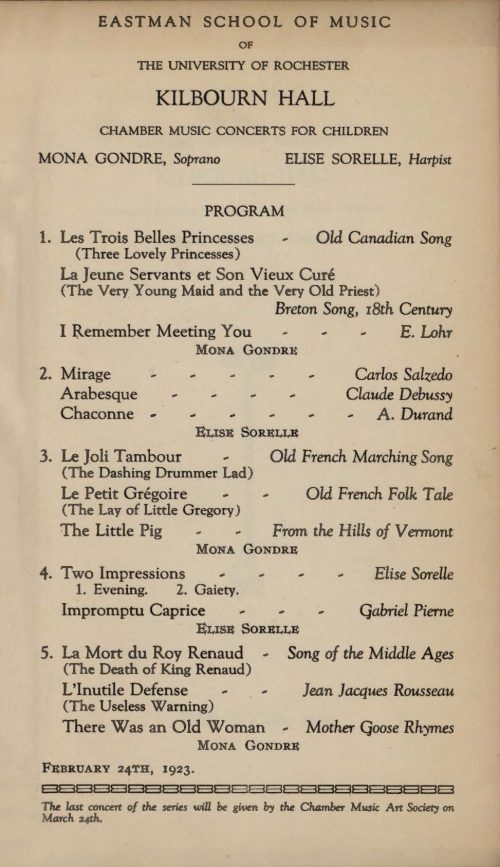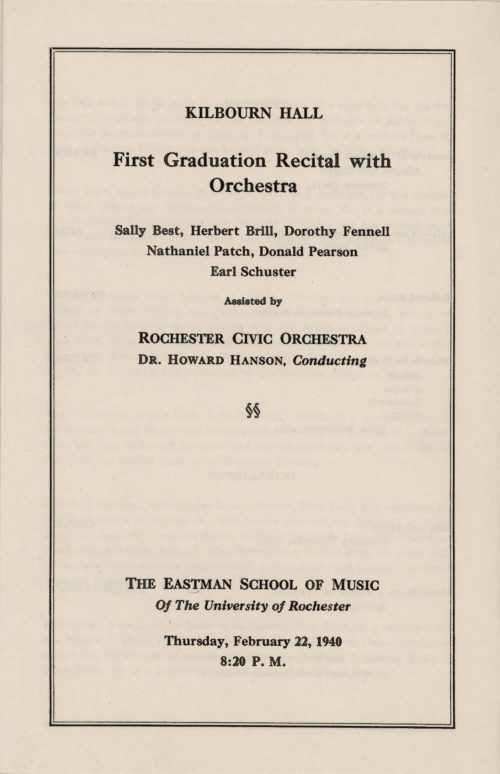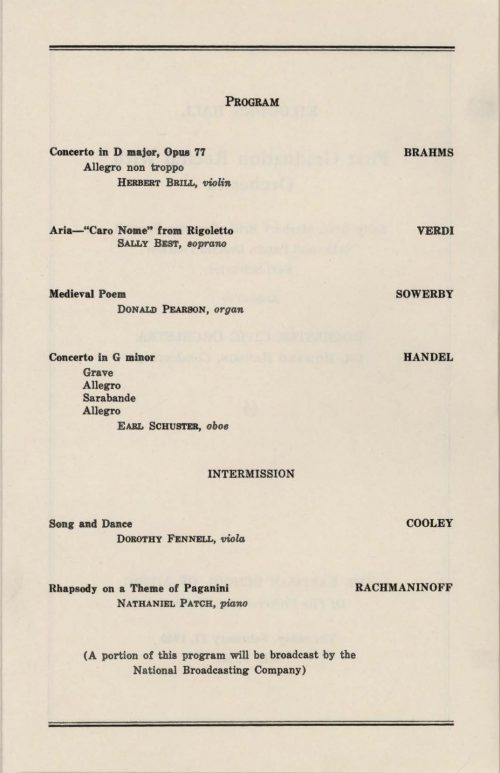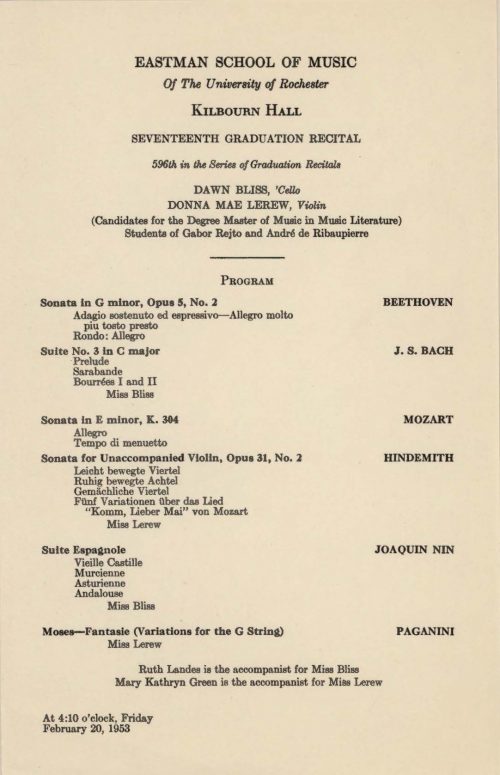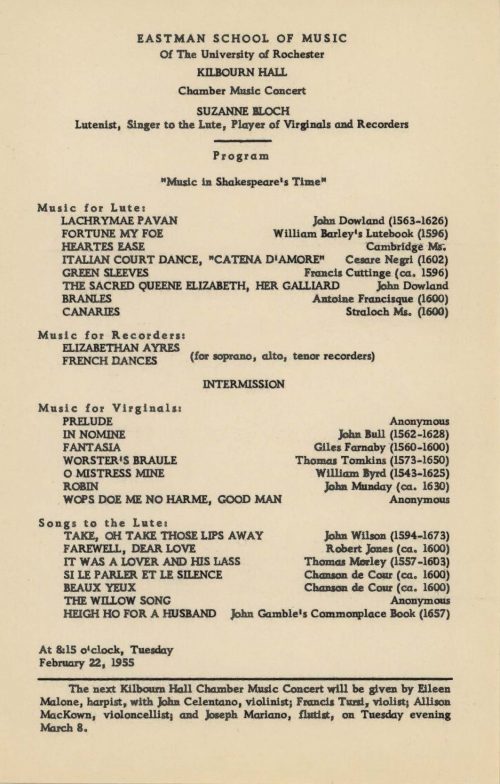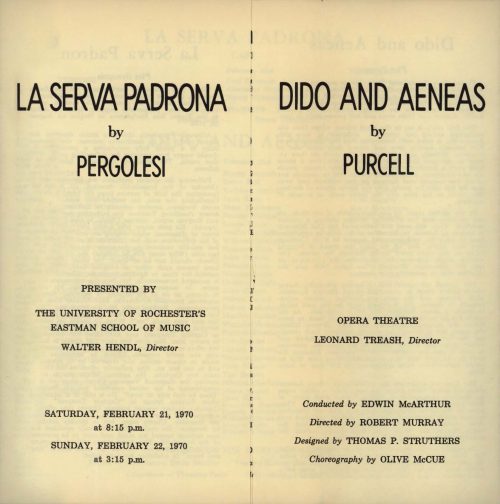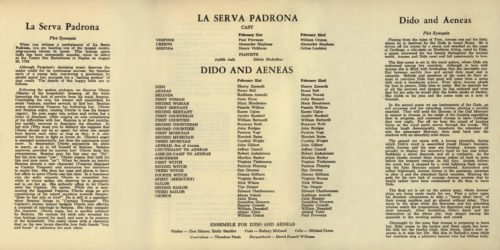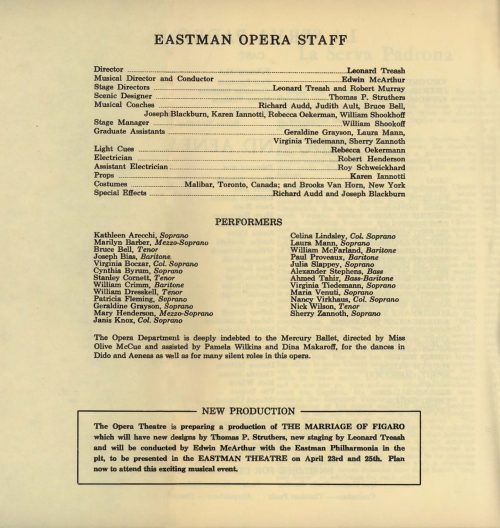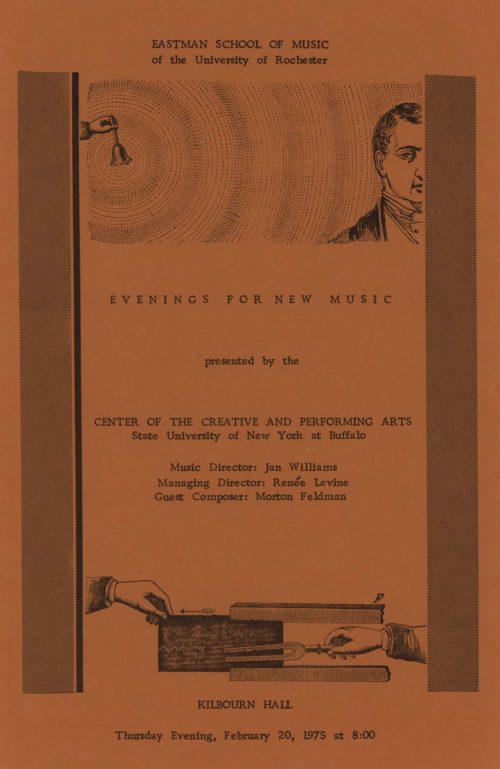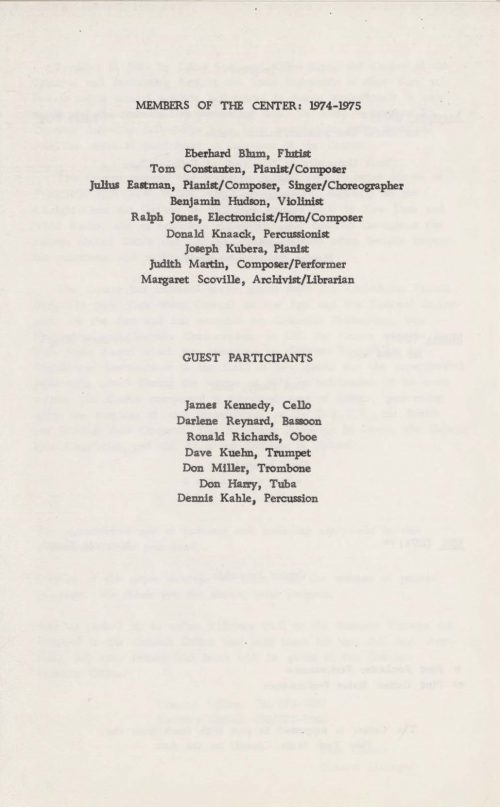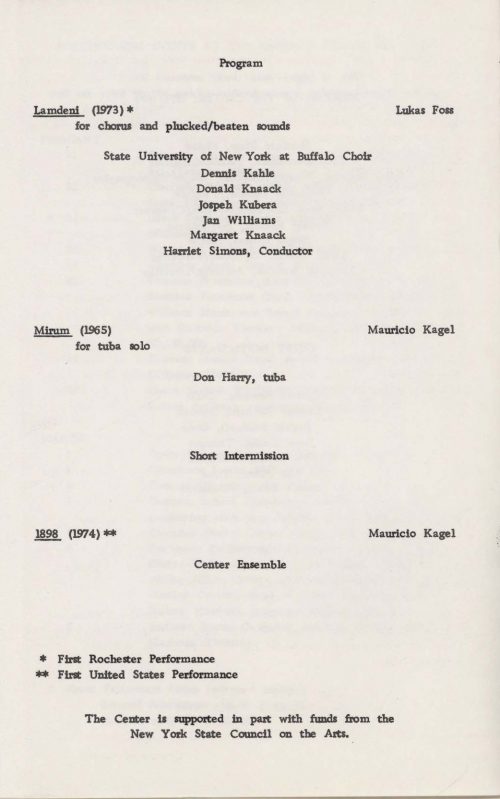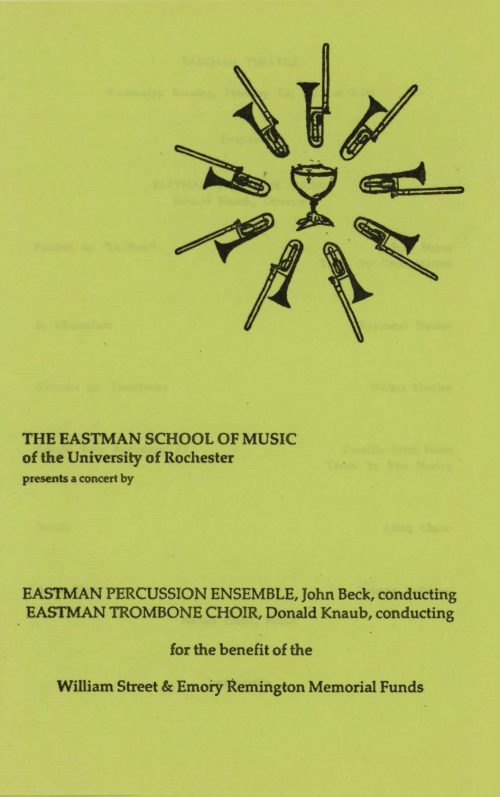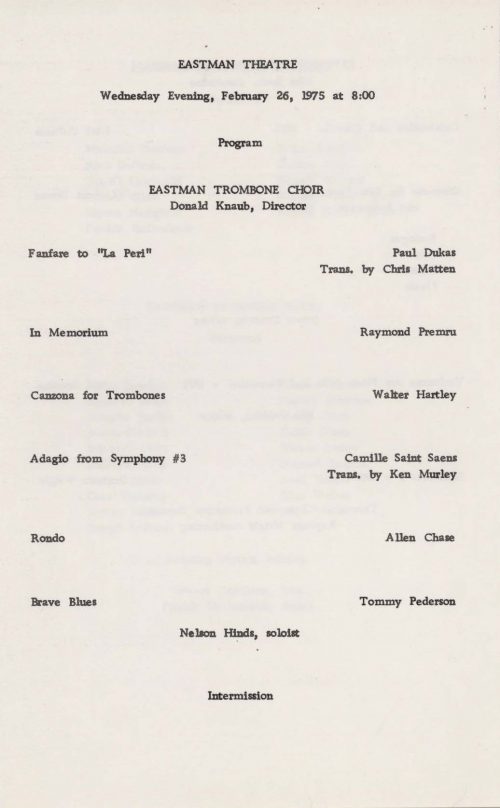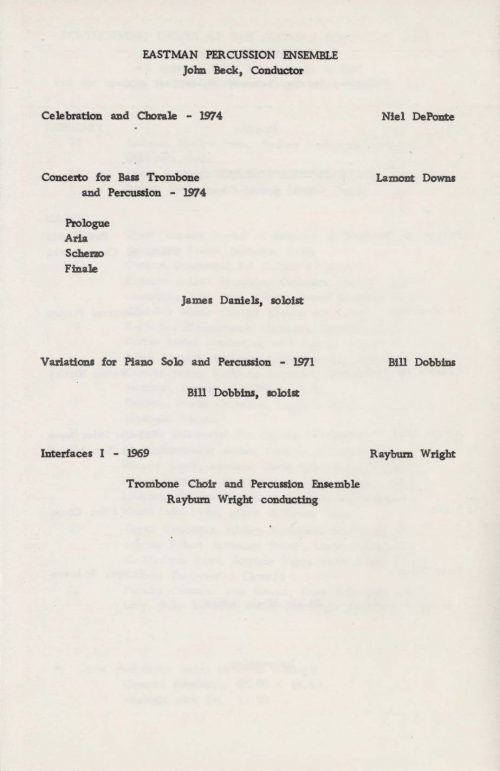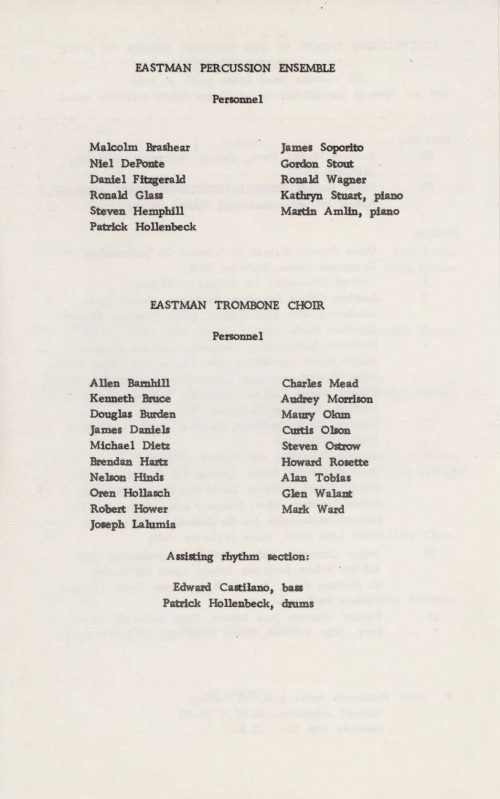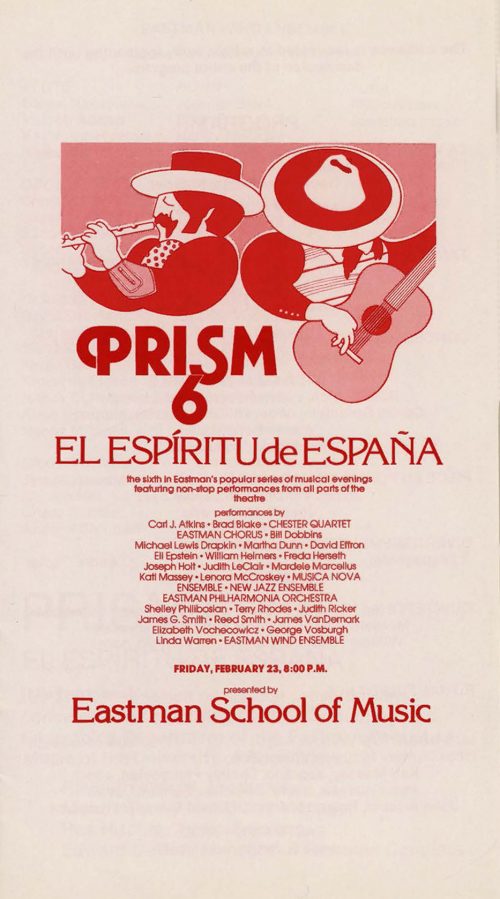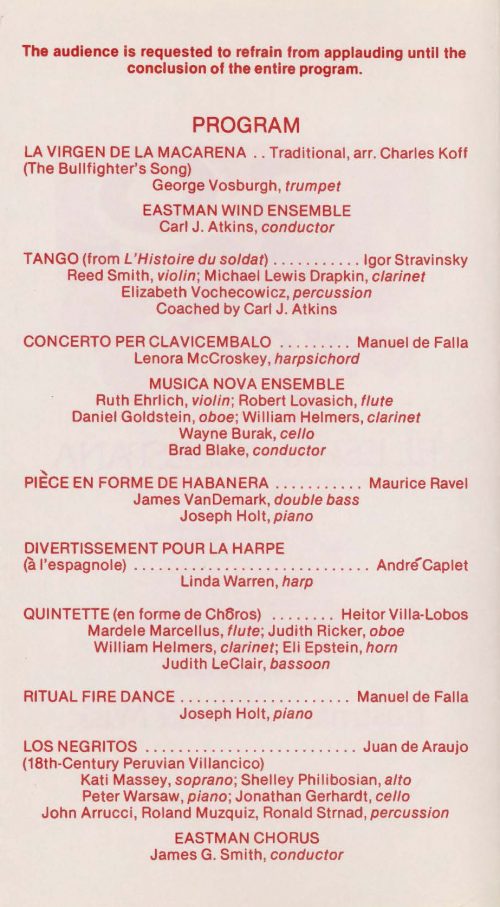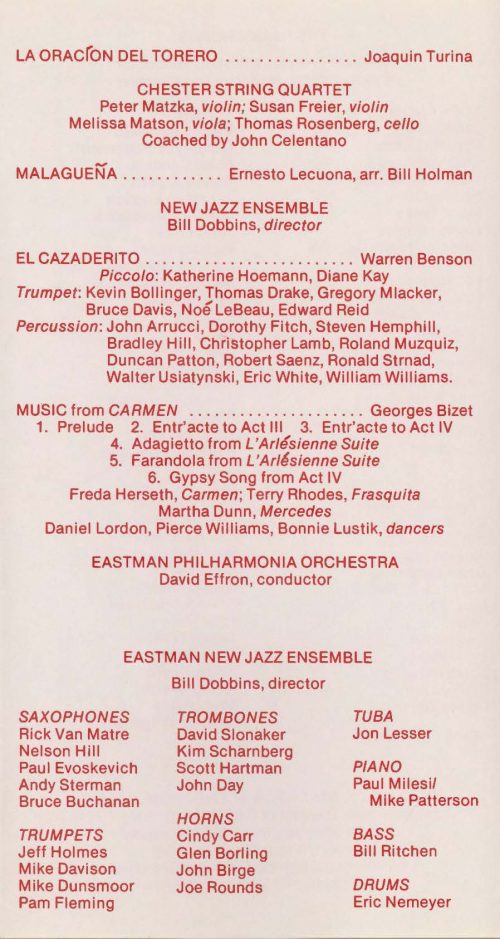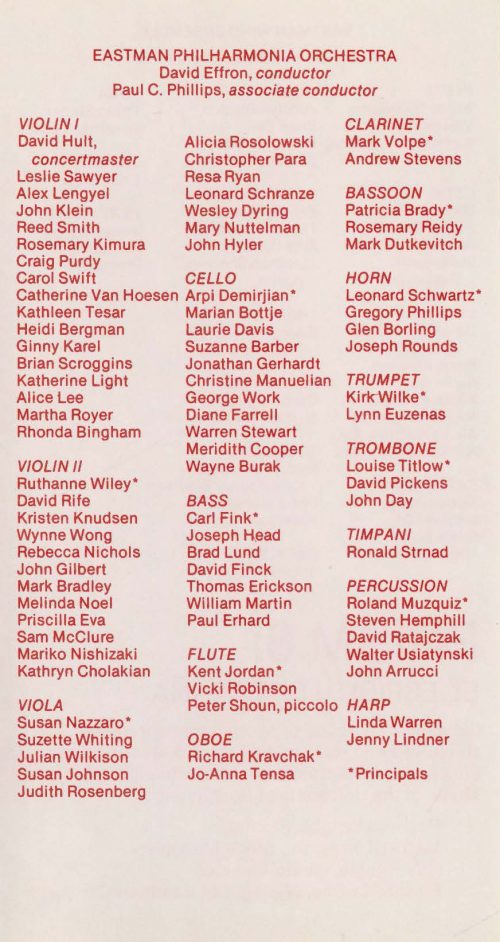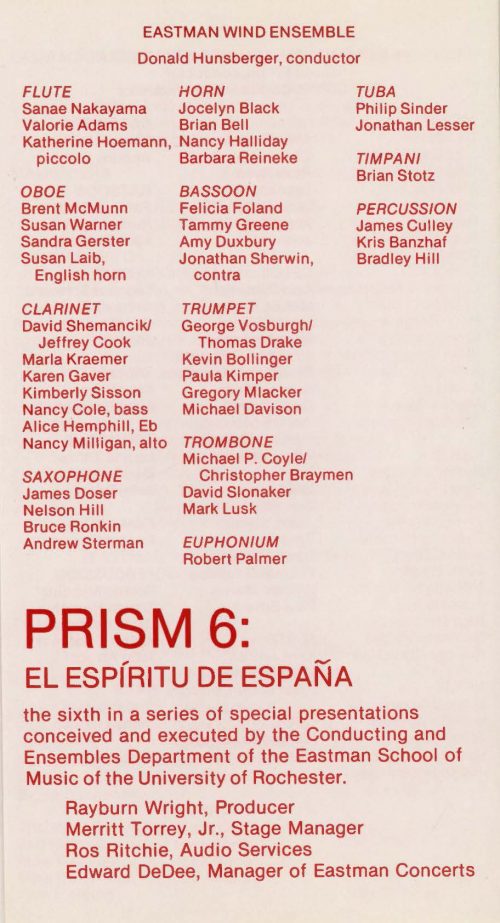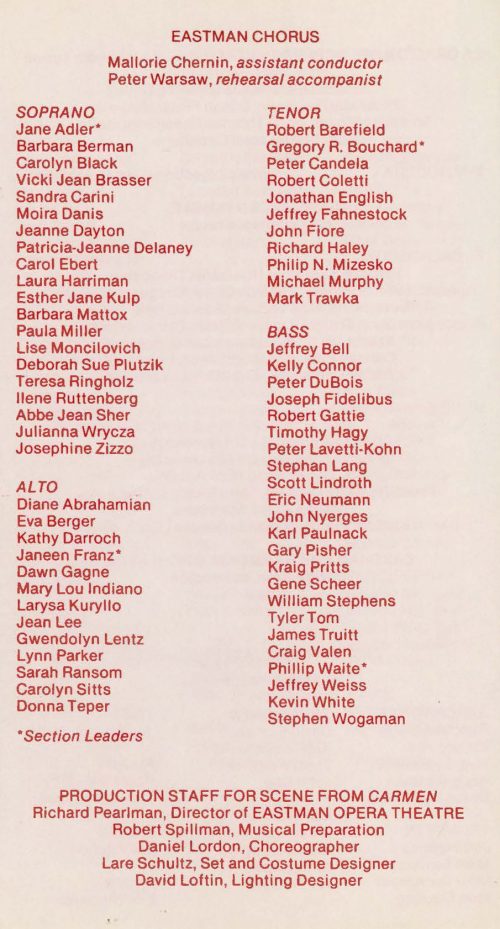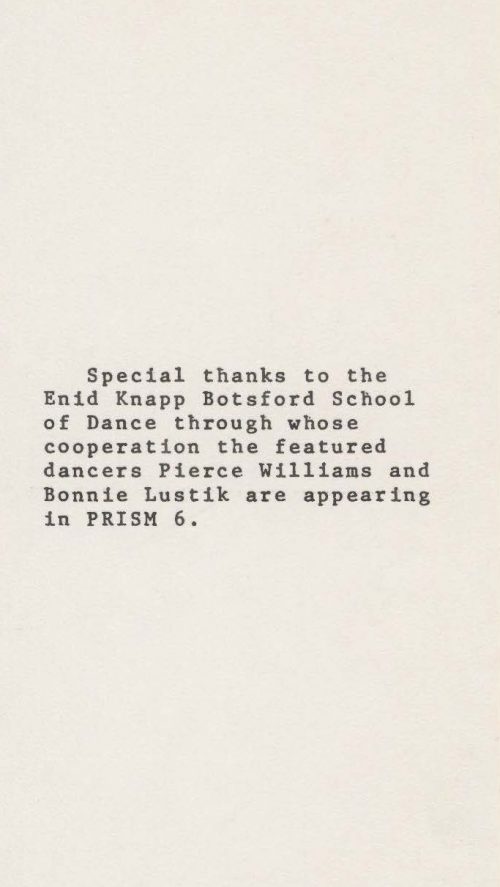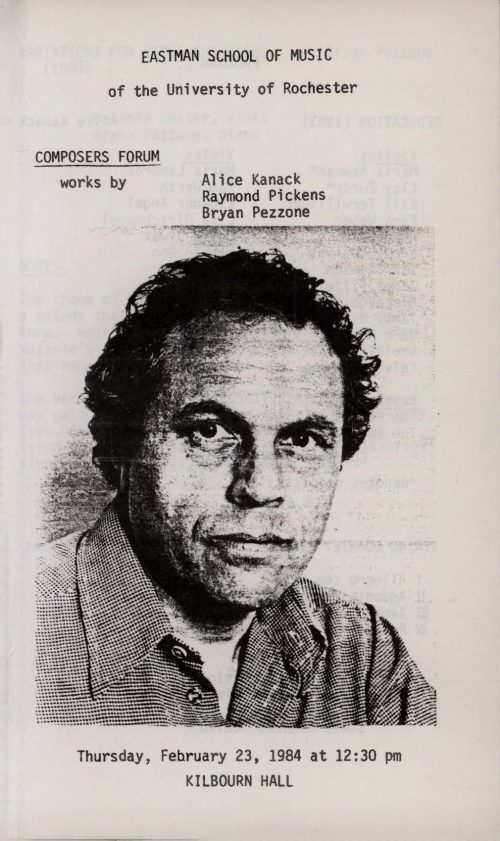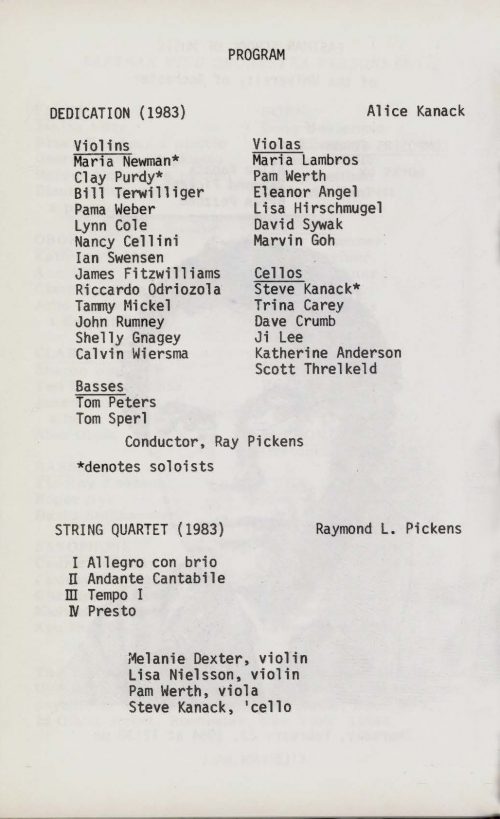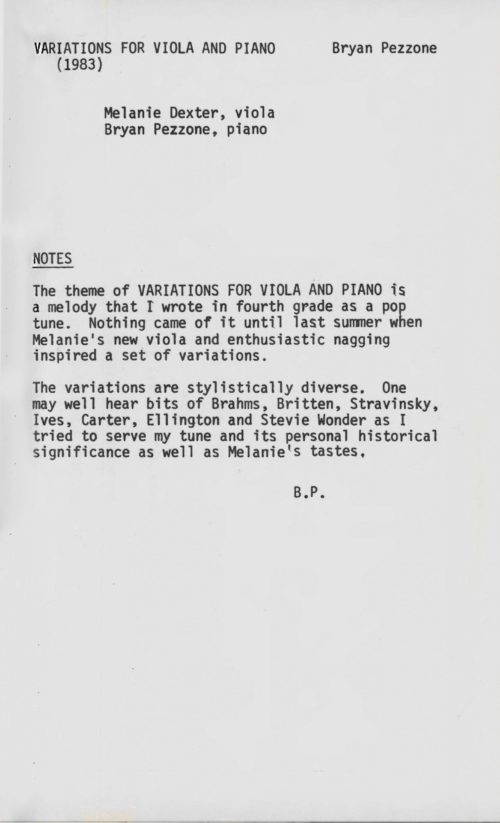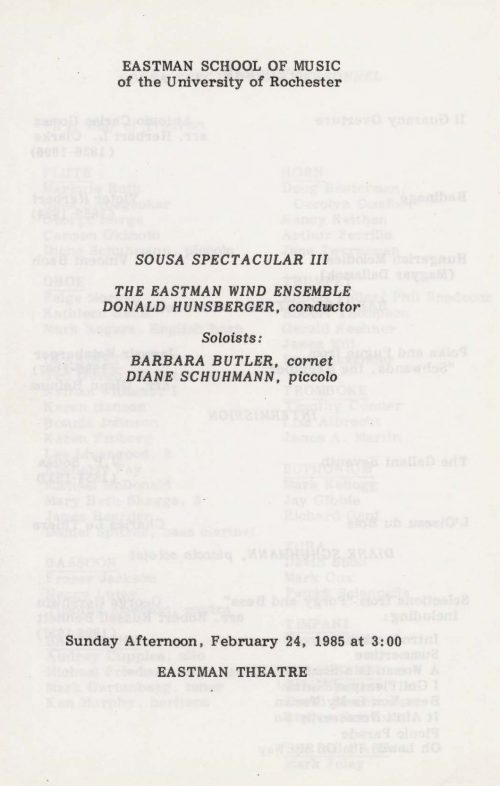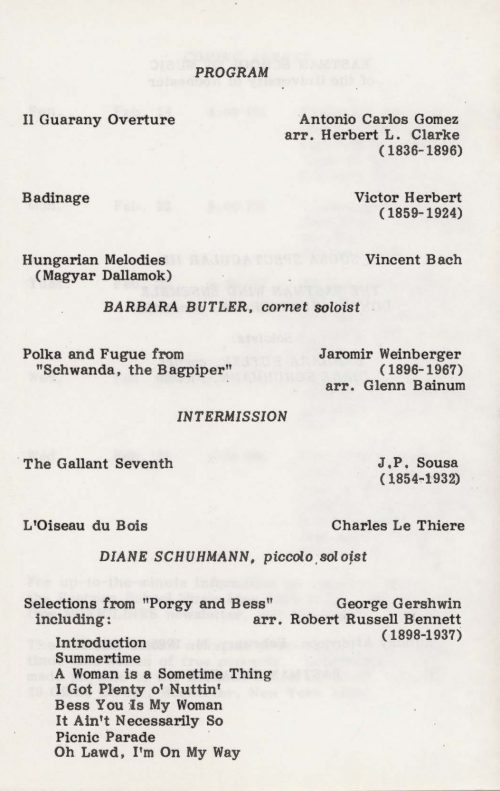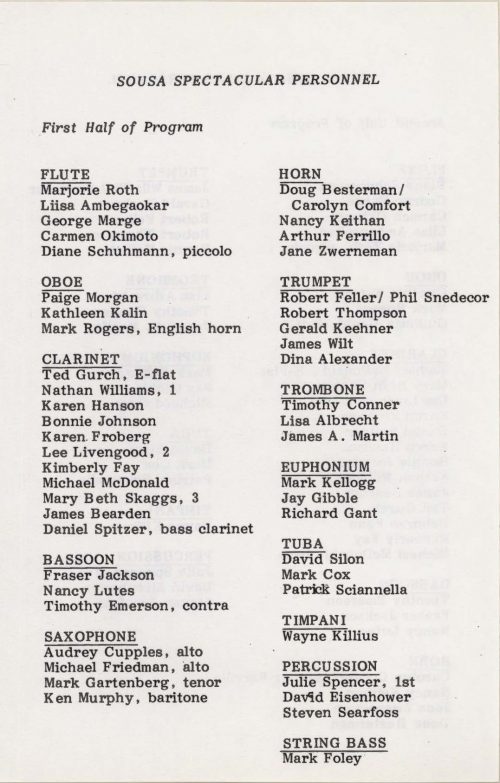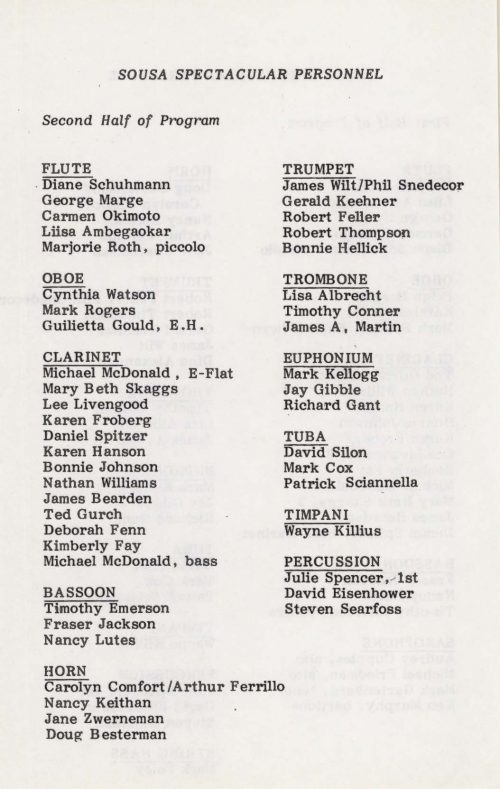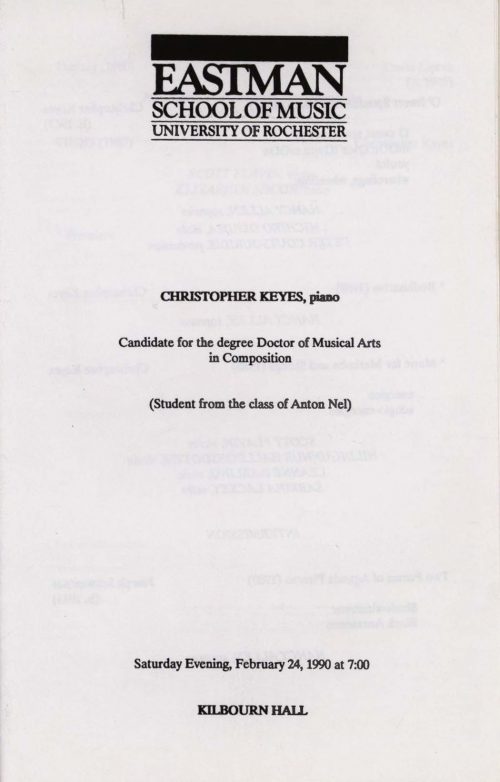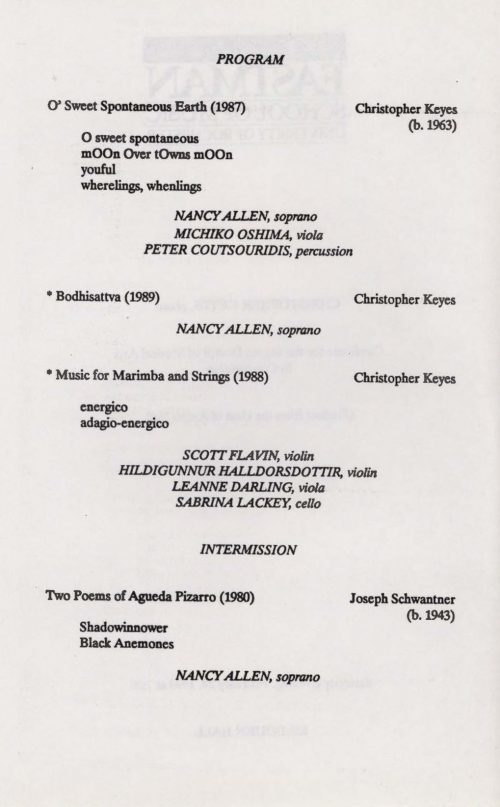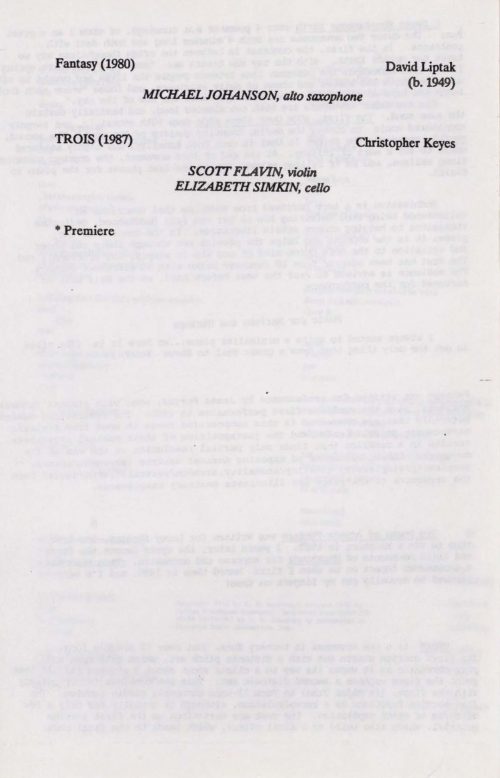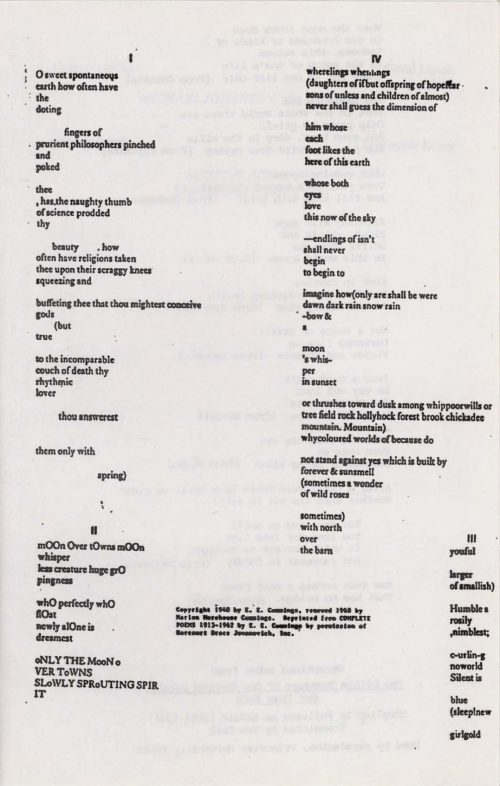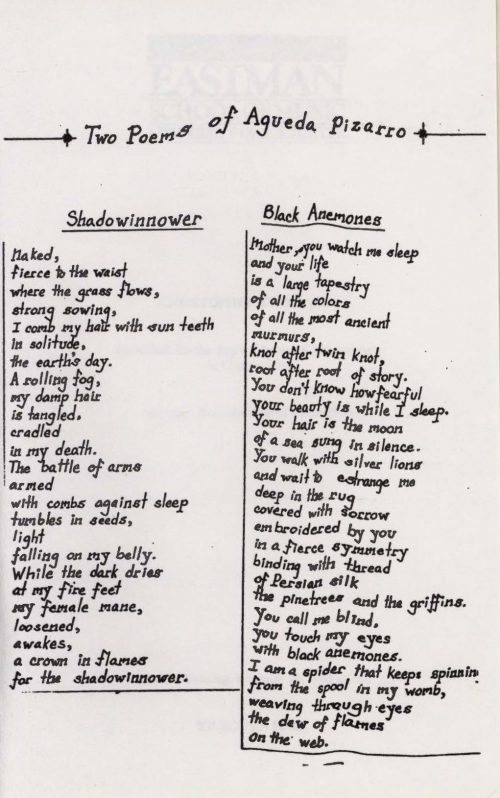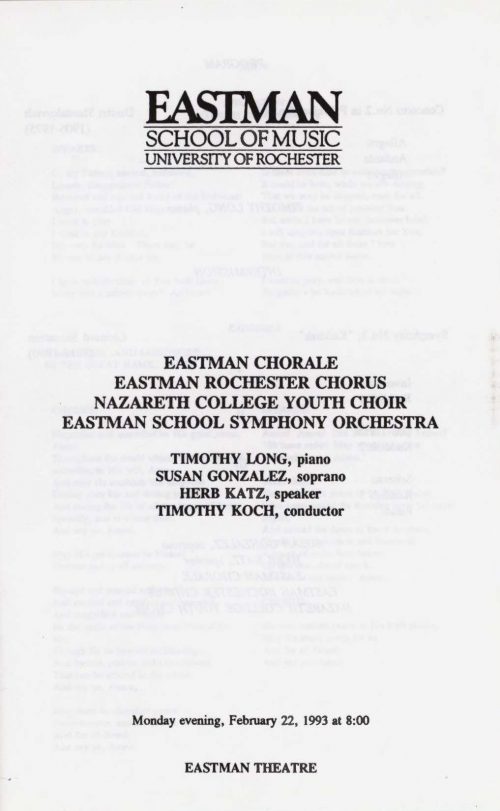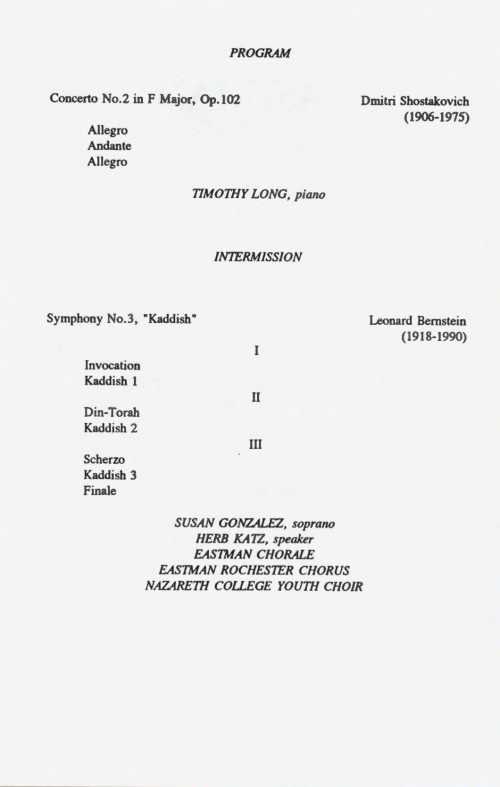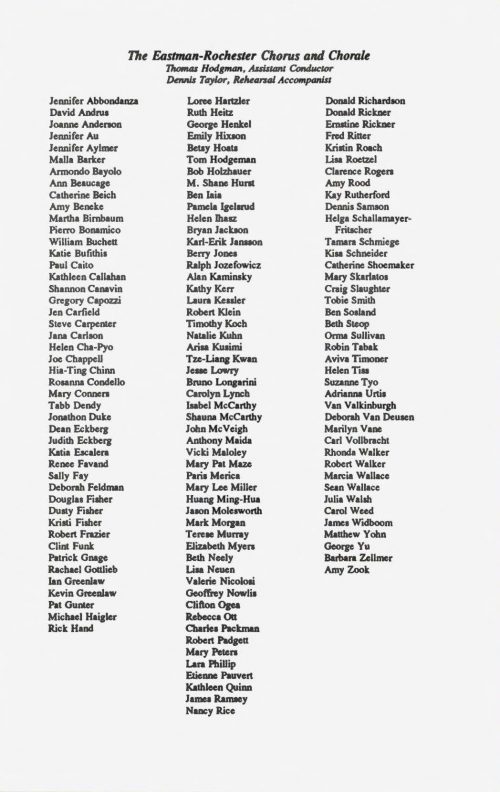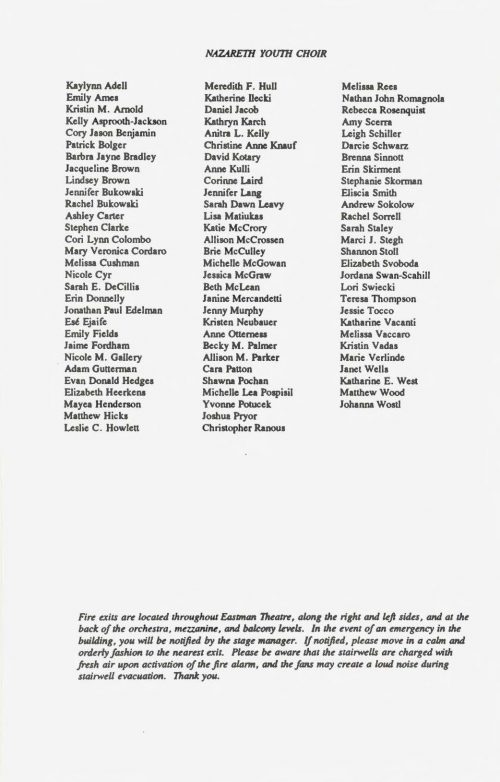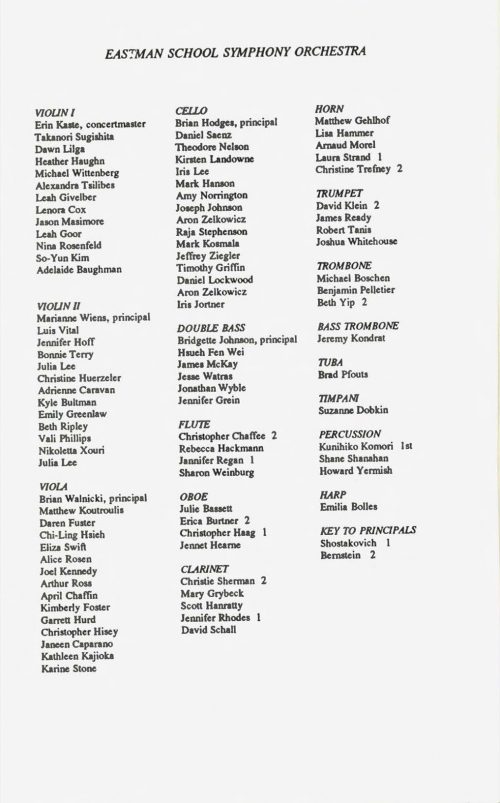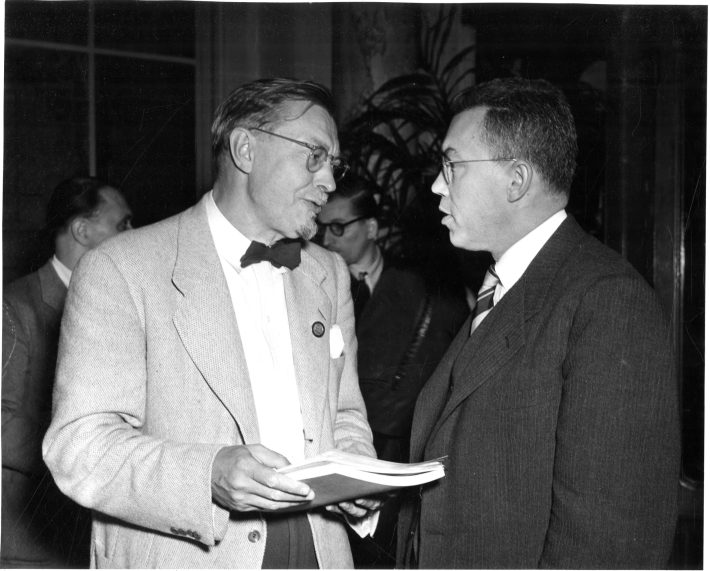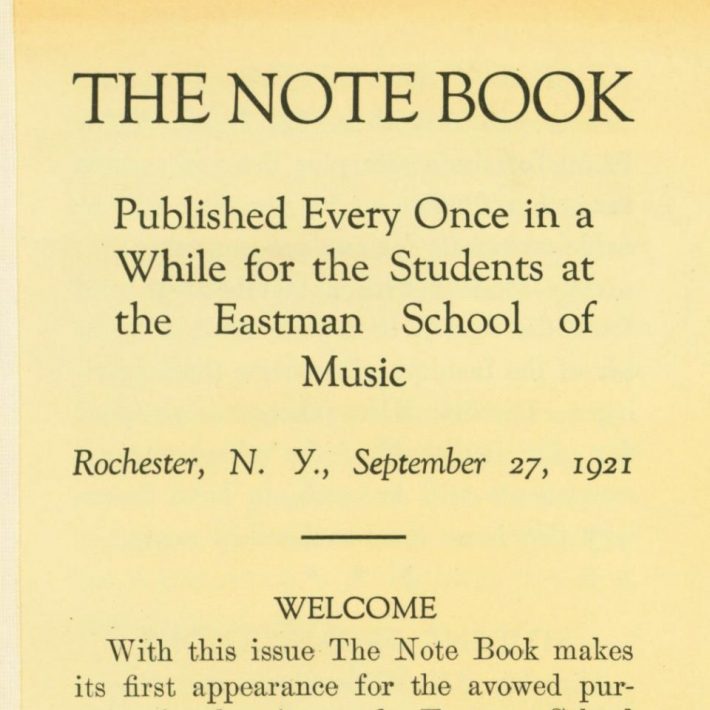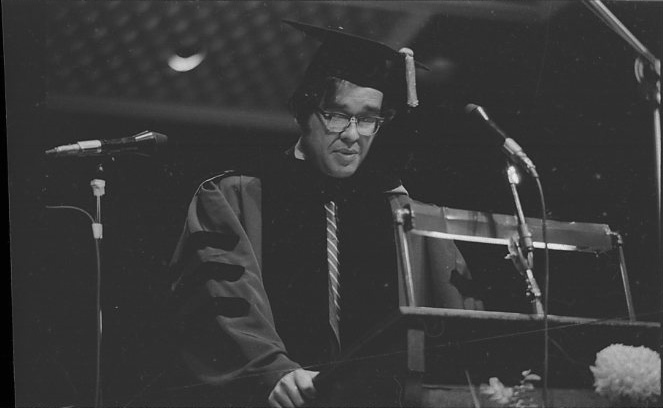1962: Jubilant homecoming of the Eastman Philharmonia
Sixty years ago this week, on February 25th, 1962, the 87 members of the Eastman Philharmonia and their accompanying entourage of conductors, chaperones, doctor, and other advisors flew home to the U.S.A., marking the conclusion of their landmark three-month tour. Arriving on a chartered KLM Royal Dutch Airlines DC-8, the orchestra touched down at Niagara Falls Airport (today Niagara Falls International Airport) shortly past midnight, where they were greeted by a cheering throng of U of R students and officials, City of Rochester dignitaries, and family members.
The Philharmonia had given the final concert of the tour in the Leningrad Philharmonic’s Great Hall on February 21st, and then the musicians had gone directly to the rail station for their overnight trip to Moscow, where they would spend their last two days in the USSR. Mr. Rodean recorded in his travel journal that the Ministry of Culture of the USSR hosted the Philharmonia members at a buffet reception on February 22nd. Later that evening, Mr Rodean was one of a group that had been invited to dinner at the American Embassy where they were the guests of American Consul Joseph R. Norbury. Mr. Rodean recounted in his journal that Dr. Fennell, who was also in the group, regaled the group with the story of the Eastman Wind Ensemble’s recording session for their Mercury recording The Civil War: its sights and its sounds (1961). The following day, Philharmonia members visited Moscow Conservatory and then were hosted to a farewell luncheon where they enjoyed Coca-Cola, sent over in cases by the staff of the American Embassy. Later in the evening Philharmonia members attended a concert at the one of the halls within the Kremlin Palace of Congresses. On February 24th the Philharmonia members flew to Amsterdam where they would spend the next 24 hours. The following day, the entire party was at the airport by 2 PM and boarded their chartered KLM DC-8 for a departure at 4:10 PM. Their return flight and arrival at Niagara Falls is described in a Rochester press item displayed here.
Quite apart from the public response is evident in the Rochester press items, some lines in Mr. Rodean’s journal are telling with respect to the acclaim that Philharmonia members enjoyed upon their return. His final entry, written on March 5th, 1962, is worth quoting at length:
“It has been over a week now since we landed at Niagara Falls. Rochester has treated us during this time as returning heroes. I have never had so many dinner invitations and afternoon tea receptions before. I have had many requests to speak before school and church groups. People on the street stop us to learn about the trip. Wednesday evening [date here] the city gave us a large banquet in the Sheraton Hotel [today 111 East Avenue]. … This pretty well wraps up a three-month tour. The immediate future seems will include a concert in Philadelphia and some recording work later in the year. Right now it is just a matter of catching up with all kinds of things.”
While tracing the story of the Philharmonia tour since late November, I have quoted liberally from Mr. Rodean’s journal, as it is the only extant primary source providing daily news. In the tour’s aftermath, three Philharmonia members set down in formal prose their thoughts on the tour and their analyses of its fulfillment of its goals. They were concertmaster Richard Kilmer[i], BM 1961, MM 1964; flutist Susan Levitin [ii], BM 1962; and double bassist Clifford Spohr[iii], BM 1963. Both Mr. Kilmer’s and Mr. Sphor’s papers were submitted for academic credit in History 206 (International Relations), a course that Professor Charles Riker was teaching at Eastman in the spring 1962 semester. The three reports are remarkable for their insight and thoughtfulness as these three musicians pondered the orchestra’s mission abroad and reflected on their impressions of the countries they had visited. The three papers leave one in no doubt that the Philharmonia members had taken seriously, to the utmost, their mandate to be musical ambassadors, and not only on the concert stage. Wherever their itinerary took them, whether meeting with conservatory students and their instructors, or visiting with members of other orchestras, or playing in small groups in social settings, such as the winds quintet in which Mr. Rodean participated, and also the jazz sessions that occurred in hotels from time to time – in these moments and more, the members of the Eastman Philharmonia had represented their school and their nation with pride and with commitment.
During the Philharmonia’s stay in Beirut, conductors Hanson and Fennell had been interviewed for a Voice of America radio broadcast. [iv] When asked by the interviewer as to the origin and purpose of the tour, Dr. Hanson had commented that the tour, this tour – sending 87 young Americans abroad – had come directly out of the Kennedy Administration’s “accent on youth,” as he put it. (President Kennedy had, after all, so famously proclaimed in his inaugural address that “the torch has been passed to a new generation of Americans.”) Dr. Hanson elaborated on that by explaining that the Eastman Philharmonia was in one sense professional, but they were actually young people, no more than age 22, so that when the audience listened to the orchestra, they heard professional music-making but they saw very young-looking people: the accent on youth. Moreover Hanson underscored that the reaction all over Europe had been that the USA was greatly interested in the arts, and not only that Americans loved the arts, but that they engaged in the arts so very well. Hanson added that Europeans were surprised to come into contact with the American concept of a professional school of music within the university, such as the Eastman School of Music represented. Dr. Fennell, when asked the same question by the interviewer, answered, “All we are doing …is to try to communicate how we feel about music to other people” and went on to elaborate that musical performances in city after city had, for the members of the Eastman Philharmonia, erased any concept of a language barrier. Later on, one month after the Philharmonia’s return, Dr. Hanson appeared on NBC-TV’s The Today Show on February 27th, when he repeated many of the same comments that he had made in the Voice of America interview.[v]
I will let Mr. Rodean have the final word: “We shall never forget these past three months.”
[i] Recollections of the 1962 Tour of Poland and the Soviet Union by a member of The Eastman Philharmonia. Typescript; 25 pages. Eastman School of Music Archives.
[ii] Report on the Eastman Philharmonia Tour of Europe, the Near East, and the Soviet Union 1961-1962. Typescript; 29 pages. Eastman School of Music Archives.
[iii] The European Tour. Typescript; 29 pages. Eastman School of Music Archives.
[iv] Voice of America/U.S. Information Agency interview. Analog 7” tape reel. Howard Hanson Collection, HA82.
[v] Today Show broadcast. Analog 7” tape reel. Howard Hanson Collection, HA 84.
Members of the Eastman Philharmonia begin to de-plane from the KLM DC-8, led first of all by Dr. and Mrs. Hanson. Eastman School Photo Archive.
A brass band comprised of Eastman School students was on hand at Niagara Falls Airport to welcome the members of the Eastman Philharmonia home. Eastman School Photo Archive.
► Joyous reunions taking place inside the airport terminal as family members and friends greet the returning members of the Eastman Philharmonia. Eastman School Photo Archive
A commemorative recording that was issued in the months following the landmark three-month tour, and that featured several of the works included in the tour’s concert programming.
1983: EJE recording session for a motion picture soundtrack
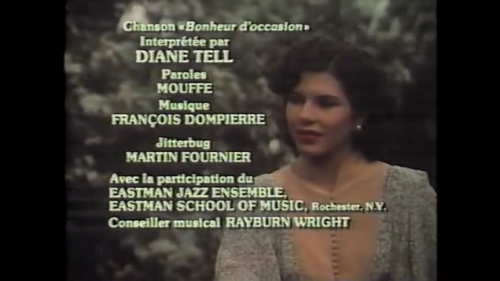 Thirty-nine years ago this week, the Eastman Jazz Ensemble met in a recording session with a special purpose. The EJE had been engaged to contribute musical content to the soundtrack of the French-Canadian motion picture Bonheur d’occasion, which was being jointly produced by Ciné St-Henri Inc. (the French-language branch of the National Film Board of Canada) and Société Radio-Canada (the French-language branch of the Canadian Broadcasting Corporation). The EJE had come to the attention of the film’s director, Claude Fournier, through his son Martin Fournier, MM ’81, DMA ’84, a saxophonist and member of the EJE.
Thirty-nine years ago this week, the Eastman Jazz Ensemble met in a recording session with a special purpose. The EJE had been engaged to contribute musical content to the soundtrack of the French-Canadian motion picture Bonheur d’occasion, which was being jointly produced by Ciné St-Henri Inc. (the French-language branch of the National Film Board of Canada) and Société Radio-Canada (the French-language branch of the Canadian Broadcasting Corporation). The EJE had come to the attention of the film’s director, Claude Fournier, through his son Martin Fournier, MM ’81, DMA ’84, a saxophonist and member of the EJE.
Released in 1983, Bonheur d’occasion was based on the novel (1945) of the same title by novelist Gabrielle Roy (1909-1983). It starred Mirielle Deyglun in the principal role of Florentine Lacasse; the film traces events in Florentine’s life as she seeks to escape from the poverty in which her family lives in the Saint-Henri slums of Montréal. The action takes place during World War II. According to Wikipedia, the novel was later regarded as having played a part in bringing about Québèc’s Silent Revolution. The novel has been translated in English under the title The Tin Drum.[i] I thank Professor Sylvie Beaudette, who drew my attention to an informative blog entry by Bentley Rumble, who elaborates on the novelist and on the novel and its impact.[ii] I also thank Professor Beaudette for her insights regarding the film Bonheur d’occasion, which she described as a classic in the Québec cinema repertoire. Several segments of the film have been uploaded to YouTube, including the conclusion.[iii]
This engagement of the Eastman Jazz Ensemble was the first instance of an Eastman School ensemble contributing to a motion picture soundtrack. In particular, for the EJE in its first sixteen years (founded in 1967), there had been numerous illustrious undertakings, including a 1982 West German tour coupled with a performance at that summer’s Montreux Jazz Festival. These will be under examination as “This Week at Eastman” continues.
[i] To date, there has been no English translation of the complete novel, since the two translations published previously have been based on abridged editions.
[ii] Bentley Rumble blog, entry of 3 April 2014 ; accessed on 9 February 2022.
[iii] YouTube video ; accessed on 9 February 2022. The EJE’s participation is acknowledged at the 2:09 mark.
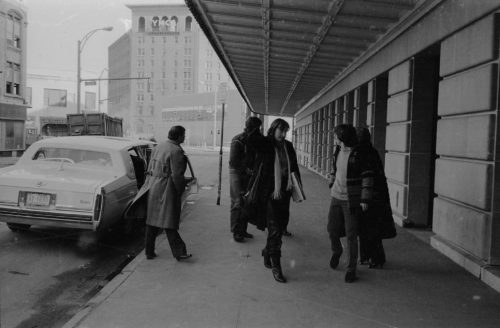
Rayburn Wright, Eastman Jazz Ensemble director, conducting members of the Eastman Jazz Ensemble in Room 120 (today known as the Ray Wright Room) on February 27th, 1983 during the recording session for the French-Canadian film Bonheur d’occasion. Louis Ouzer Archive
Rayburn Wright, Eastman Jazz Ensemble director, conferring with French-Canadian film director Claude Fournier in Room 120 (today known as the Ray Wright Room). Louis Ouzer Archive
A cameraman for local television news captures footage of the Eastman Jazz Ensemble’s recording session on February 27th, 1983. Louis Ouzer Archive
Two scenes in the control room during the Eastman Jazz Ensemble’s recording session on February 27th, 1983. Mr. Ros Ritchie, Director of the Eastman School’s Recording Services, was the engineer. Louis Ouzer Archive
The Weekly Dozen
In this week’s “Weekly Dozen” we recognize an interesting event in the ESM’s early Chamber Music series, dedicated entirely to music for children; one of the Graduation Concerts with Orchestra, reflecting the requirement established by Dr. Hanson that candidates for the performer’s certificate perform in public with orchestra; a performance by the renowned Suzanne Bloch, who made several appearances at Eastman over the years; one of the lively Composer’s Forum events of the ‘80s, with the printed program’s distinctive cover illustration; and some superlative student performances such as grace the Eastman concert calendar each week of the semester.
►February 22, 1940: First Graduation Concert with Orchestra
►February 21, 1970: EOT double bill: La Serva Padrona; and, Dido and Aeneas
►February 20, 1975: Evenings for New Music
►February 26, 1975: Eastman Percussion Ensemble and Eastman Trombone Choir
►February 23, 1979: PRISM 6: El espíritu de España
►February 23, 1984: Composer’s Forum
►February 24, 1985: Eastman Wind Ensemble: Sousa Spectacular II
►February 24, 1990: Christopher Keyes, piano
►February 22, 1993: Concerto Concert


